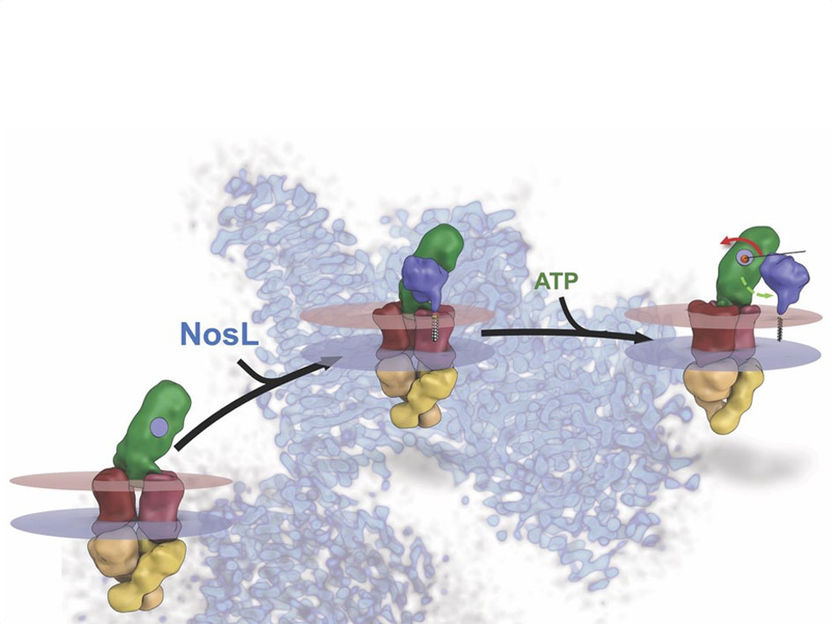A molecular machine at work
Researchers unravel the assembly of an enzyme that detoxifies the greenhouse gas N₂O
Advertisement
The greenhouse gas nitrous oxide (N2O) is produced as a by-product of industrial processes and through the use of fertilizers in agriculture. It is making a steadily growing contribution to climate change and the depletion of the ozone layer. It is so chemically unreactive that it remains in the atmosphere for a very long time. So far, only one enzyme is known in nature that can convert this gas into harmless nitrogen and water: N2O reductase. However, this is a copper-containing metal enzyme and as such is sensitive to the oxygen in the air we breathe. Dr. Christoph Müller and Dr. Lin Zhang from the research group of Prof. Dr. Oliver Einsle at the Institute of Biochemistry at the University of Freiburg, together with Prof. Dr. Juan Du and Prof. Dr. Wei Lü from the Van Andel Research Institute in Grand Rapids/USA, have now made significant progress in understanding this enzyme.

Three states of the maturation apparatus of N2O reductase: A complex of the proteins NosF (yellow), NosY (red) and NosD (green) changes its conformation by consuming biochemical energy and can thus take over a copper ion from the transport protein NosL (blue) and pass it on to the enzyme in the next step.
Group Einsle
Components of a molecular machine isolated and characterized
With regard to biotechnological applications of N2O reductase, it is crucial to understand and control the supply of copper ions during the assembly of the enzyme in the cell. The scientists* have therefore isolated the components of a multi-part molecular machine that accomplishes this assembly and characterized them using cryo-electron microscopy. They have presented their work in Nature.
Mechanical process: maturation of the metal centers of N2O reductase.
The maturation of the metal centers of N2O reductase is a surprisingly mechanical process in which conformational changes of the membrane protein NosDFY are triggered by the consumption of biochemical energy in the cell. This enables the complex to accept a single copper ion from a special transport protein, NosL, and then offer it to the still copper-free or only partially assembled N2O reductase.
New function discovered
Using a variety of high-resolution structural models, the researchers were able to map and understand the individual steps of this complex process in great detail. They discovered a previously undescribed function of this important class of membrane proteins and took a major step toward harnessing the enzyme N2O reductase to reduce atmospheric nitrous oxide.
Note: This article has been translated using a computer system without human intervention. LUMITOS offers these automatic translations to present a wider range of current news. Since this article has been translated with automatic translation, it is possible that it contains errors in vocabulary, syntax or grammar. The original article in German can be found here.
























































